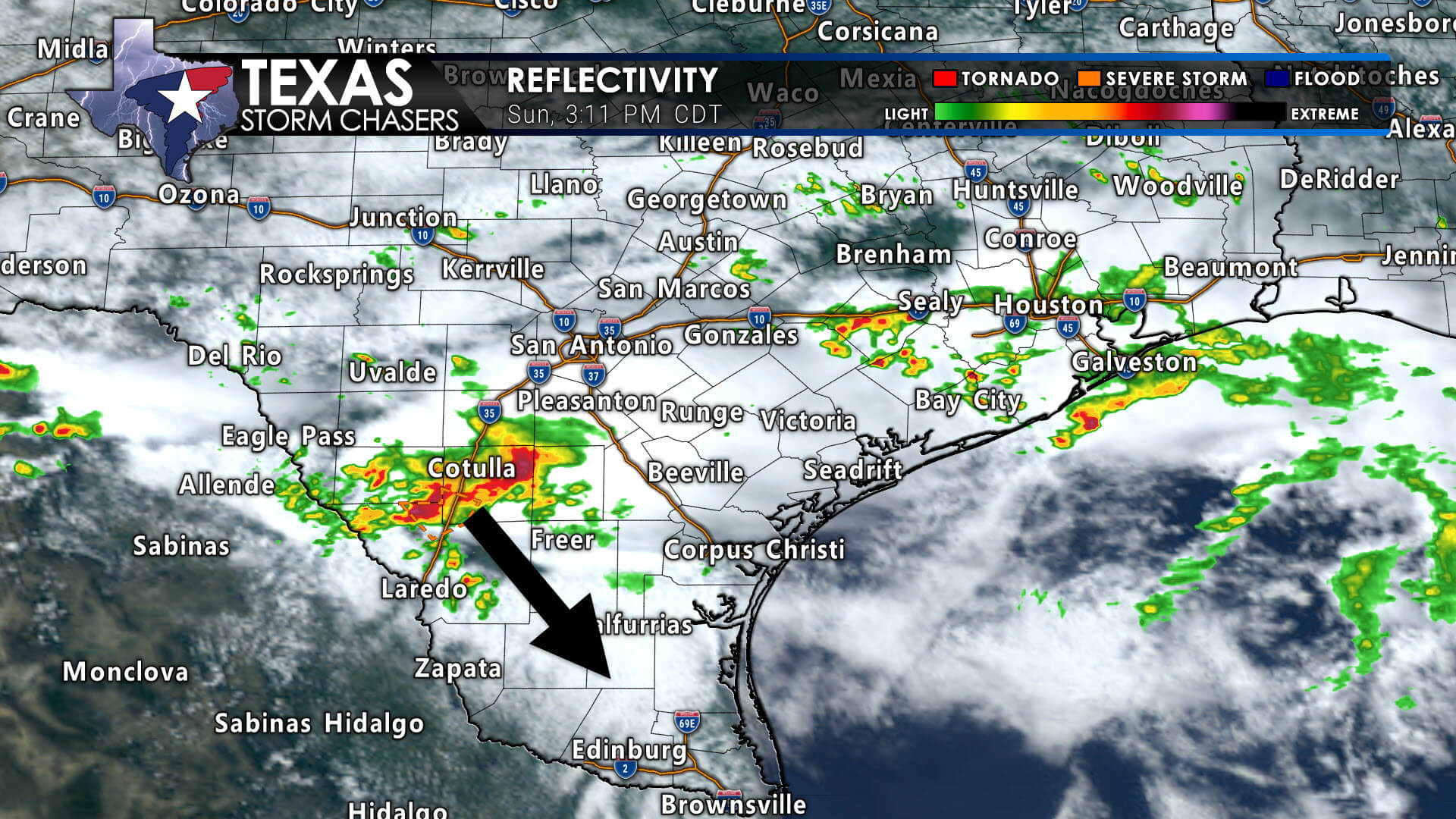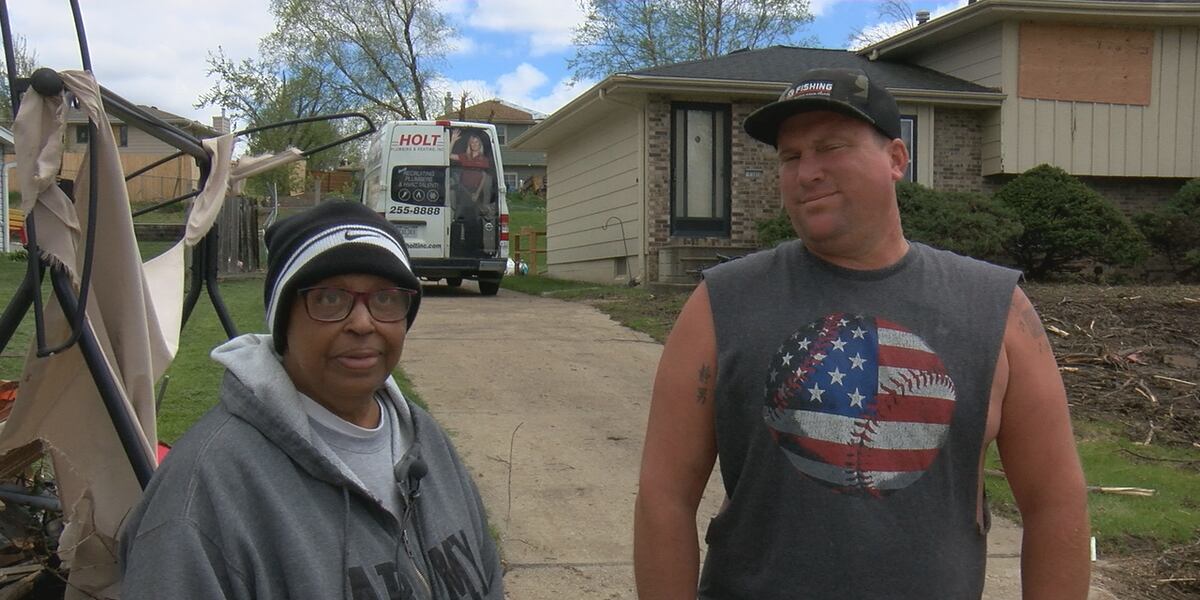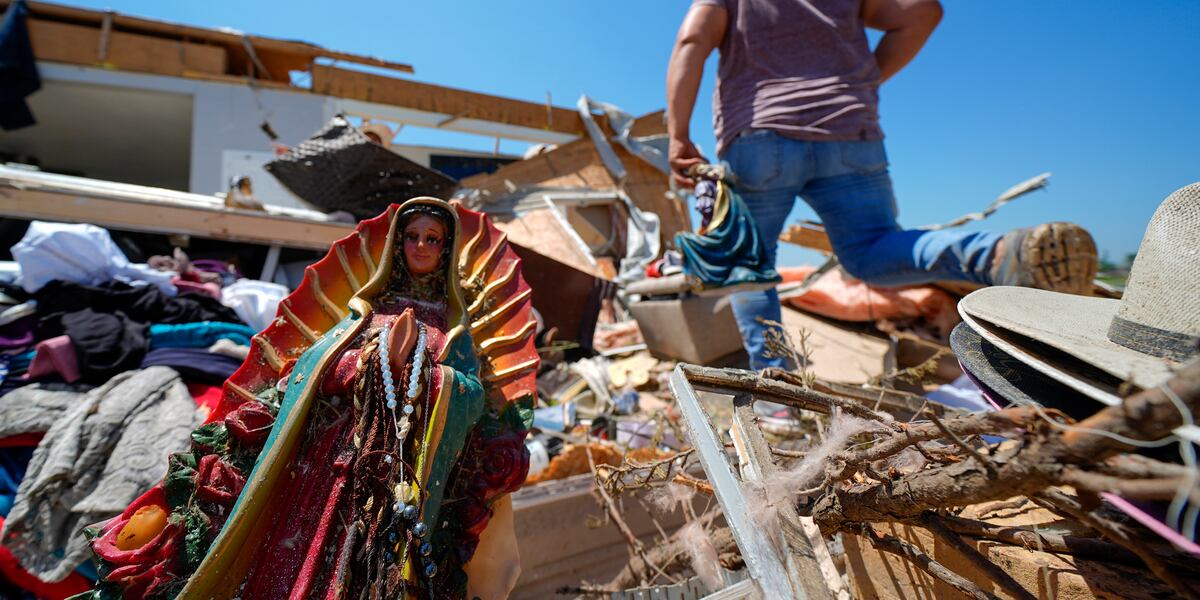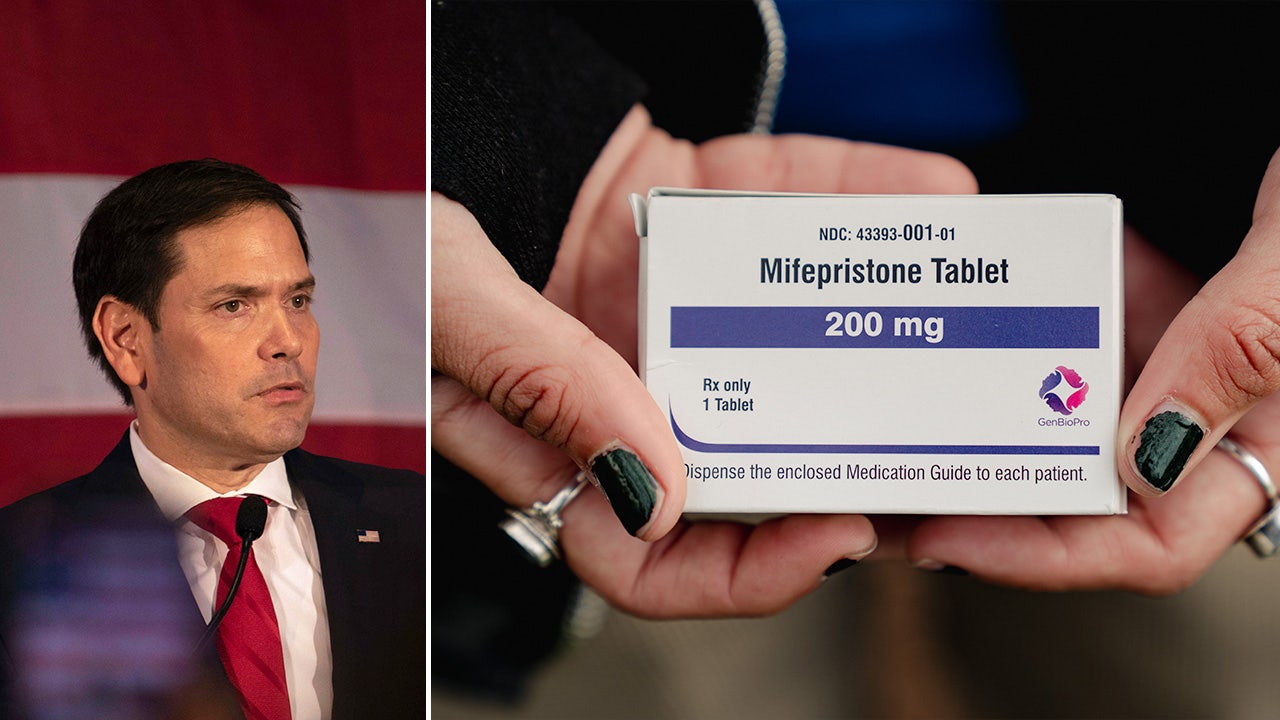San Diego, CA
City of San Diego accelerates Chollas Creek emergency cleanup project ahead of next storm

SAN DIEGO (KGTV) — Crews from the City of San Diego’s Stormwater Department began the cleanup of debris along Chollas Creek in Southcrest early Friday morning.
City crews started the effort on 38th Street and Beta Street, and then moved up along the northeast direction of the creek.
For the city, there’s no time to waste because another storm system is expected to arrive in San Diego next week.
Although this storm is not expected to be as intense as Monday’s storm, it could still make more of a mess for the people who live near Chollas Creek if the storm drains are not unclogged before then.
In a press conference Thursday, the city’s Deputy Chief Operating Officer Kris McFadden said, “What that entails is going in and starting in Beta Street, putting in heavy equipment and removing any and all vegetation that we can. Anything that got washed in the storm drain channel. And I was there, I’ve seen what’s washed into there; it’s everything.”
This emergency cleaning project is involves the deployment of 16 teams throughout Southcrest, Mountain View, and Encanto.
City officials said its already cleaned out 1,000 tons, or 2 million pounds, of storm-related debris in other impacted areas, and identified more than 70 streets between the three neighborhoods that have debris and mud blocking streets and storm drains.
So far, the city has gotten to 16 out of the 70.
Southcrest residents and flood victims like Stephanie Threadgill said she’s been telling the city to clean the drains for years.
“We’ve been complaining and complaining for the last four years because I’ve lost two cars prior to this,” Threadgill said. “Every time we let them know the rain’s coming, the cars get filled up over the tire before anyone comes from the city to unclog the drains, it’s really bad and its getting worse.”
To see more of the city’s plan to recover from Monday’s storm, click here: https://www.sandiego.gov/storm
To report damage to your residence, click here: https://crisistrack.juvare.com/

San Diego, CA
Artisan baker grows wheat crop in San Diego County

SAN DIEGO — When you picture the many farms in San Diego County, you might picture avocados, oranges and other fruit, but wheat typically isn’t on the menu. One San Diego man is working to bring wheat back to Southern California.
A tedious task like weeding becomes a practice opportunity for Noris Velazquez.
“I can just weed the garden, and it becomes a martial arts training,” he said.
Velazquez is a martial arts instructor and artisan bread maker. The collision of his two passions has earned him the nickname “Kung Fu Baker.” He planted a quarter acre of wheat in December 2023, hoping to spark a resurgence of wheat farming in San Diego.
In the late 19th century, California was once the nation’s second largest suppliers of wheat, but by the 1880s, many San Diego farmers opted to grow citrus and avocados instead.
“Can one person do it?” Noris said. “Because ultimately I wanted to inspire farmers to go “You know, I’ve always wondered if I could grow a cover crop of wheat and not only get the cover crop aspect but also maybe something to harvest that I can use either in my family household or team up with a passionate baker in the area.”
His business, Sourdough Delight, focuses on putting only the best ingredients into his loaves. For Velazquez, that means baking bread with local ingredients, grown sustainably, without any pesticides. He is striving to create a flour that is more nutritious and heartier than the refined stuff from many wheat and commercial mills.
“I want that health and nutrition because flavor also follows that,” Velazquez said.
Bean farmer Mike Reeske donated a chunk of land on his farm, Rio Del Rey, as an experimental playground. He said they tried growing 25 different wheat varieties last year, before settling on planting a full field of a wheat variety called India Jammu this year.
“We produced quite a bit of wheat,” Reeske said. “And so I think this is going to be a signal that other people can do this.”
They are also using a technique called dry farming — cultivating crops without irrigation — which Reeske believes will appeal to struggling farmers.
“We have probably one of the highest prices of water in the United States here, so being able to dry farm a crop and not pay for the water cost is really important,” he said.
Months of dedication and hard work finally paid off at the end of May when Velazquez harvested the wheat. He will now let the wheat dry before threshing the grain to use in his bread.
“Clean food, grown with love and care, and respect for our land, to nourish the community,” Velazquez said. “Nature just does miracles.”
San Diego, CA
Estrada untouchable with record 13 straight K's

Seriously. Everybody.
In the Padres’ 4-0 victory on Tuesday night at Petco Park, Estrada struck out all three Marlins he faced. They were his 11th, 12th and 13th consecutive strikeouts, setting a
San Diego, CA
La Jolla traffic board wants San Diego to adopt practices allowing lower speed limits
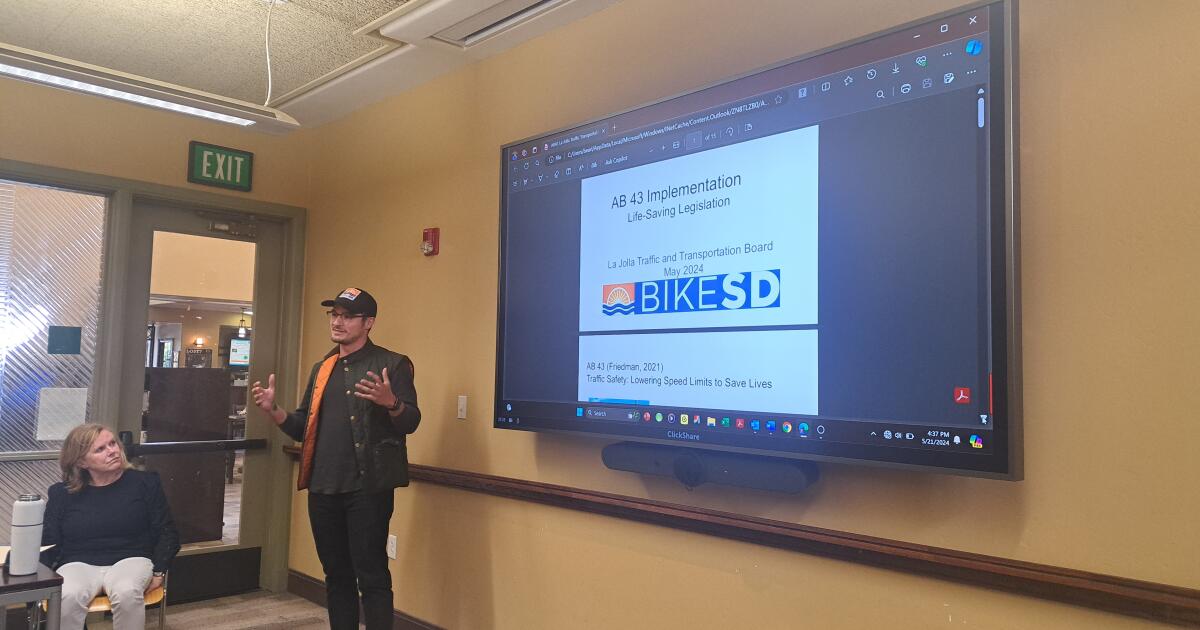
An initiative that could lead to lower speed limits in parts of San Diego has unanimous support from the La Jolla Traffic & Transportation Board.
At its meeting May 21, the board considered a request to advise the city to adopt actions laid out in state Assembly Bill 43, which gives municipalities the authority to reduce speed limits on roads contiguous to a business district and others that are deemed particularly unsafe for pedestrians and cyclists. They already were authorized to lower the speed limit in school zones.
The request was presented by Anar Salayev, executive director of BikeSD, a nonprofit that promotes bicycling and cycling infrastructure and safety measures. Salayev said reduced speed limits would be the first step in achieving traffic calming as well as improving road safety.
Supporters of AB 43 cite National Highway Traffic Safety Administration data that says if a person is struck by a vehicle traveling 20 mph, the person has up to a 95 percent chance of surviving, vs. a 20 percent chance if the vehicle is traveling 40 mph.
“On the surface, [the speed] doesn’t seem like that much of a difference, but it’s actually exponential in the potential consequences and outcomes,” Salayev said. “Slower vehicle speeds make for a more comfortable and safer experience, not only for pedestrians but also for cyclists, for anyone in a wheelchair, for really anyone else on that road.”
AB 43 was signed into law in fall 2021, and since then, several California cities have taken a cue from the bill to reduce speed limits across hundreds of miles of roadway. Salayev said San Diego is “ripe” to follow suit, citing a memo in November 2022 from Councilman Stephen Whitburn calling for the city Transportation Department to use AB 43 to develop a list of streets recommended for speed limit reduction.
The memo asked that priority be given to “streets with a history of fatal and severe injury collisions” and that the department “conduct an outreach effort to hear directly from community members regarding suggestions for speed limit reductions.”
A city news release in February 2023 announced that San Diego — aided by a $680,000 grant from the U.S. Department of Transportation — would develop a speed management plan identifying areas where lower speeds would most benefit pedestrians and cyclists.
“Cities have been adopting this,” Salayev said at the T&T Board meeting, “and it’s about time that San Diego does, too.”
“The council members want a list of five corridors from every district where they can start rolling this out immediately,” Salayev said. “You all live and work and commute in La Jolla. You are the right people to let … the council know where you think speeds could be reduced.”
La Jolla is represented by District 1 Councilman Joe LaCava.
Salayev also suggested that the La Jolla Community Planning Association write a letter to the mayor’s office outlining specific streets the group feels would best be served by lowered speed limits.
When asked about the effectiveness and fiscal impact of the implementation of AB 43 in other cities, Salayev acknowledged that the programs are relatively new and that not enough substantial data has been produced to make firm conclusions.
Some Traffic & Transportation Board members said any speed limit changes need to be accompanied by active enforcement.
“If it’s not going to get enforced, or if there is no mechanism to enforce it … it’s just not going to change the behavior of people who don’t care anyway,” member John Bauer said.
Board Chairman Brian Earley said there is a relative lack of police presence in La Jolla compared with the speeding violations that happen regularly.
“We’re missing enforcement,” Earley said. “We’d really like to see enforcement of surface street speeds, and I don’t know why they can’t park the car, pull out a radar gun and pull people over. We all know the Police Department needs funding. They could increase their revenue and solve a lot of their financial issues in a week.”
California has based speed limits on a process known as the 85th percentile, in which speed surveys conducted by local governments on busy streets every 10 years or so measure the speed at which drivers were traveling, and speed limits are set to reflect what 85 percent of motorists were driving at on a given section of road.
However, in many cases when the 85th-percentile method called for raising speed limits, local officials in San Diego declined to update the limits because of neighborhood opposition and concerns about pedestrian injuries and deaths.
That made the existing speed limit unenforceable, meaning the city had to give up issuing tickets using radar or other electronic devices.
In 2019, The San Diego Union-Tribune, citing data obtained through a public records request, reported that of the 656 streets where the city was responsible for setting speeds, 103 had stretches where police were not allowed to enforce the speed limit by radar — totaling more than 110 miles of roadway.
Streets in La Jolla where that applied included parts of Calle de Oro, La Jolla Parkway, La Jolla Boulevard, Nautilus Street and Via Capri.
San Diego police Officer Jason Costanza said at the time that “complaints about traffic safety are one of the forefront complaints. When we don’t have the ability to enforce the speed, it’s difficult to explain the situation to the public. That’s frustrating for us and the community.”
AB 43 modifies the 85th-percentile method so that motorists’ driving behavior doesn’t need to be the dominant factor in establishing speed limit recommendations.
Board member Tom Hardy brought up automated cameras as a way to get motorists to obey speed limits.
“The streets aren’t safe,” Hardy said. “When pedestrians and cyclists go out in this neighborhood, they’re taking their lives into their own hands.”
Salayev said enforcement likely would come after the establishment of corridors in need of traffic calming.
“This would be a first step to help identify those corridors and roll out this program while working on creative long-term changes down the line that would actually reduce speeds in a significant way,” Salayev said. “What we want to see from there is self-enforcing streets. That could be anything from cameras to … other sorts of infrastructure later down the line.”
Salayev pointed to Assembly Bill 645, a law signed by the governor in October that established a speed camera pilot program in six California cities.
Resident Michael McCormack expressed a desire for reduced speed limits in La Jolla Shores.
“This is just like cigarettes in bars in 2000,” McCormack said. “Everyone used to say ‘That’s just the way it is.’ Well, we’re the same way with speed as a community. The speeds are too fast.”
Board member Bill Podway asked about the cost of implementing lower speed limits, adding that the city of San Diego is “dead broke.”
Salayev said the cost of changing speed limit signs would be minimal and could be bundled with another project.
Following the discussion, the board voted to support use of AB 43 by the city. The decision is expected to be reviewed by the Community Planning Association at its meeting in June.
Meanwhile, the San Diego Association of Governments, the county’s regional planning agency, is working to pinpoint high-risk areas for cyclists and pedestrians in its first regionwide “Vision Zero” action plan.
Vision Zero is a road safety concept adopted by 90 U.S. cities, including San Diego, that aims to reduce traffic deaths to zero, even if it slows traffic.
SANDAG is creating two maps as part of its plan. One shows where crashes typically have happened in the past, while the other tries to guess where they will happen in the future.
The first map indicates that 6.1 percent of non-freeway local roadways account for more than half of fatal crashes involving pedestrians and cyclists.
The second map shows locations with the most risk factors that typically predict crashes — such as number of lanes and proximity to apartment complexes or commercial districts.
Sam Sanford, a SANDAG senior regional planner, said the agency also is gathering public input, including through an online survey where nearly 3,000 people singled out potentially dangerous intersections.
He said that could help cities discover problem areas that local officials aren’t aware of.
Other T&T news
Event chairman Howard Zatkin (standing) presents proposed parking space closures for this summer’s Concerts by the Sea at La Jolla’s Scripps Park.
(Tyler Faurot)
Concerts by the Sea: The board also voted unanimously to support the closure of six parking spaces along Coast Boulevard at Scripps Park during the Kiwanis Club of La Jolla’s Concerts by the Sea series this summer.
The spaces will be reserved for musicians to unload and load their equipment.
Four free Sunday concerts are slated for the series, all from 3:30 to 5:30 p.m. at Scripps Park.
The schedule:
• July 14: Atomic Groove (variety dance band)
• July 21: Jimmy Buffett cover band
• July 28: Betamaxx (‘80s music)
• Aug. 4: Big Time Operator (big band music)
Next meeting: The La Jolla Traffic & Transportation Board next meets (pending items to review) at 4 p.m. Tuesday, June 18, at the La Jolla/Riford Library, 7555 Draper Ave.
— San Diego Union-Tribune staff writer David Garrick contributed to this report. ◆
-

 Movie Reviews1 week ago
Movie Reviews1 week ago‘The Substance’ Review: An Excellent Demi Moore Helps Sustain Coralie Fargeat’s Stylish but Redundant Body Horror
-

 Culture1 week ago
Culture1 week agoFrom Dairy Daddies to Trash Pandas: How branding creates fans for lower-league baseball teams
-

 News1 week ago
News1 week agoRed Lobster files for bankruptcy after missteps including all-you-can-eat shrimp
-

 World1 week ago
World1 week agoPanic in Bishkek: Why were Pakistani students attacked in Kyrgyzstan?
-

 News1 week ago
News1 week agoThe states where abortion is on the ballot in November : Consider This from NPR
-

 Politics1 week ago
Politics1 week agoMichael Cohen swore he had nothing derogatory on Trump, his ex-lawyer says – another lie – as testimony ends
-

 News1 week ago
News1 week agoCity of Kyle falls short of ‘Kyle’ world record
-

 Politics1 week ago
Politics1 week agoAnti-Israel agitators interrupt Blinken Senate testimony, hauled out by Capitol police



